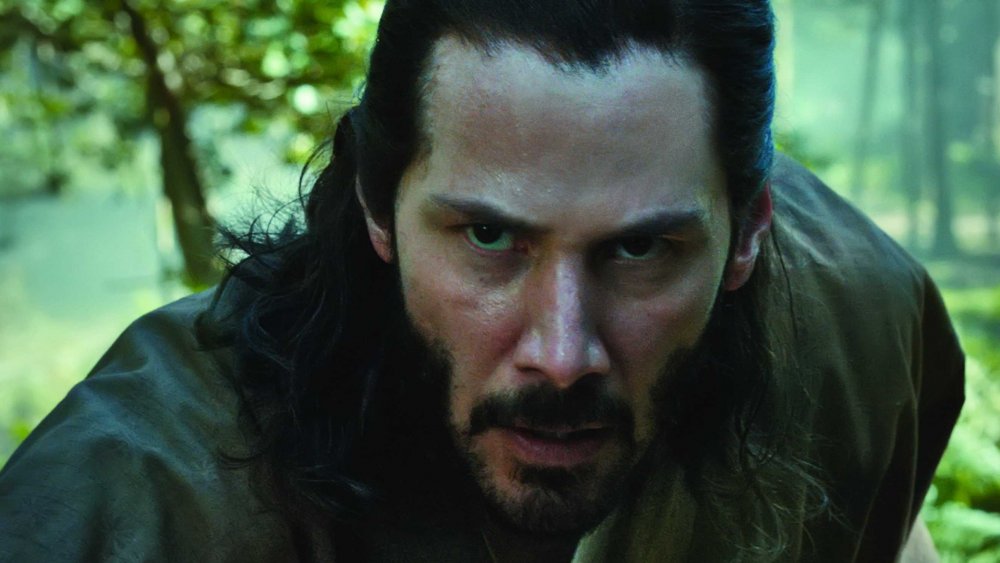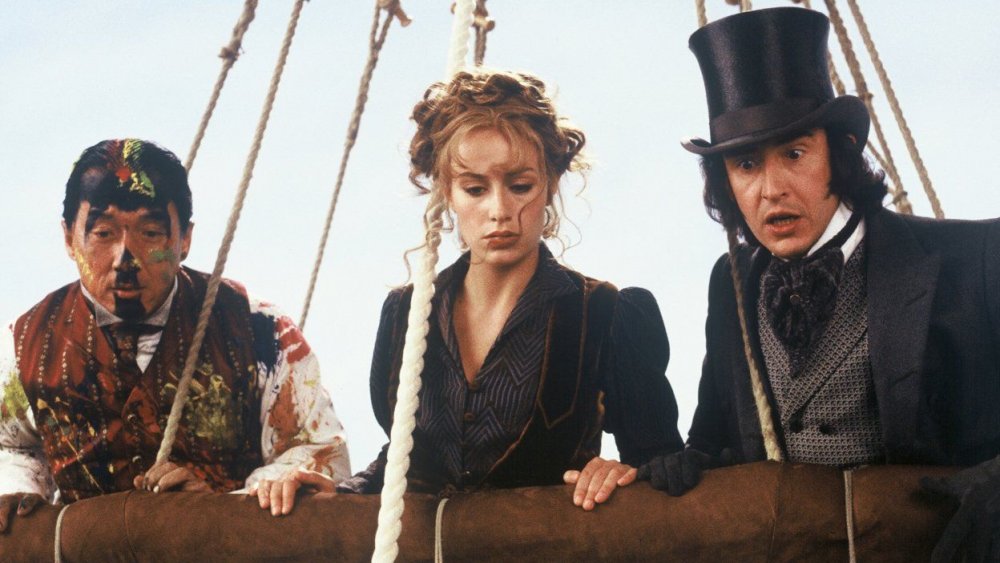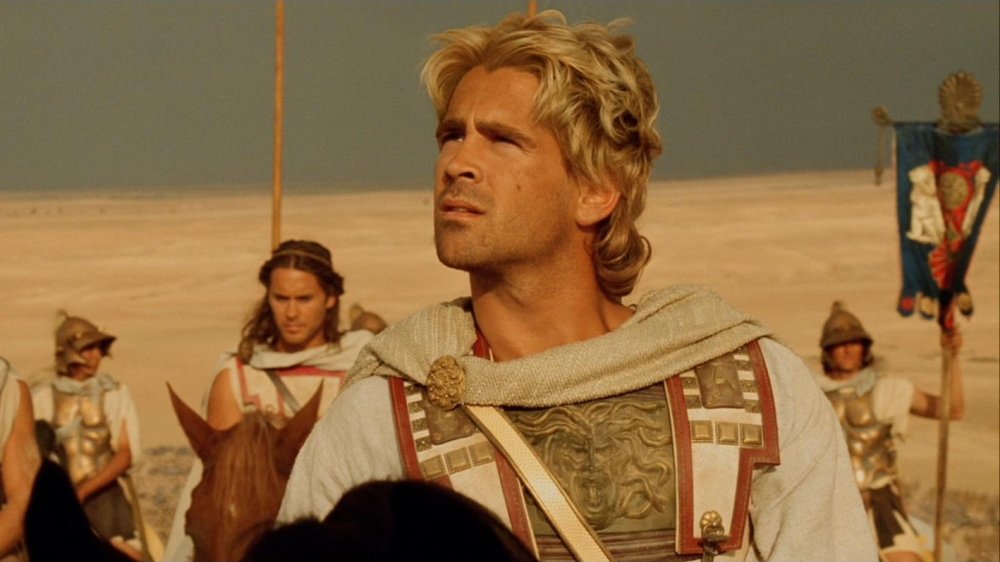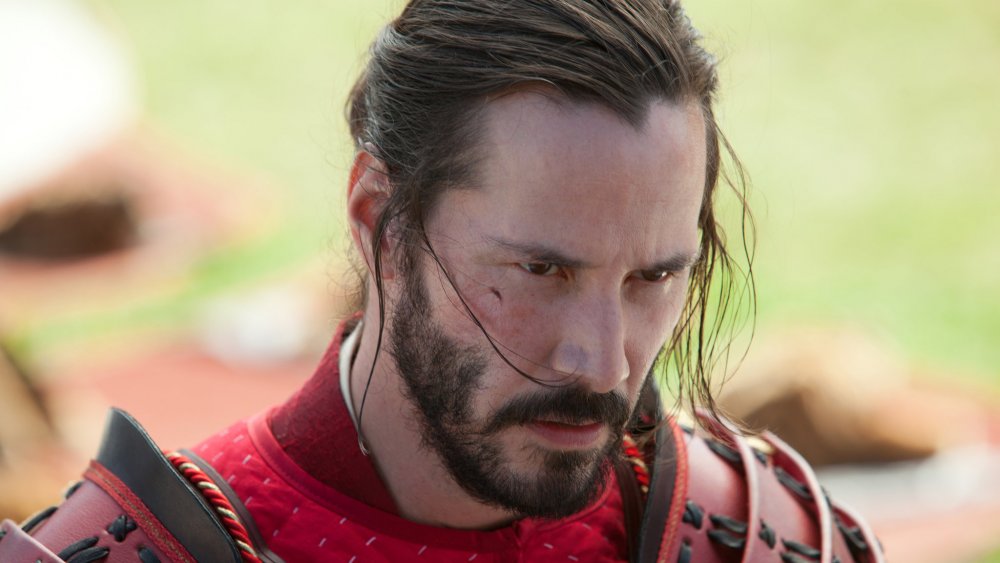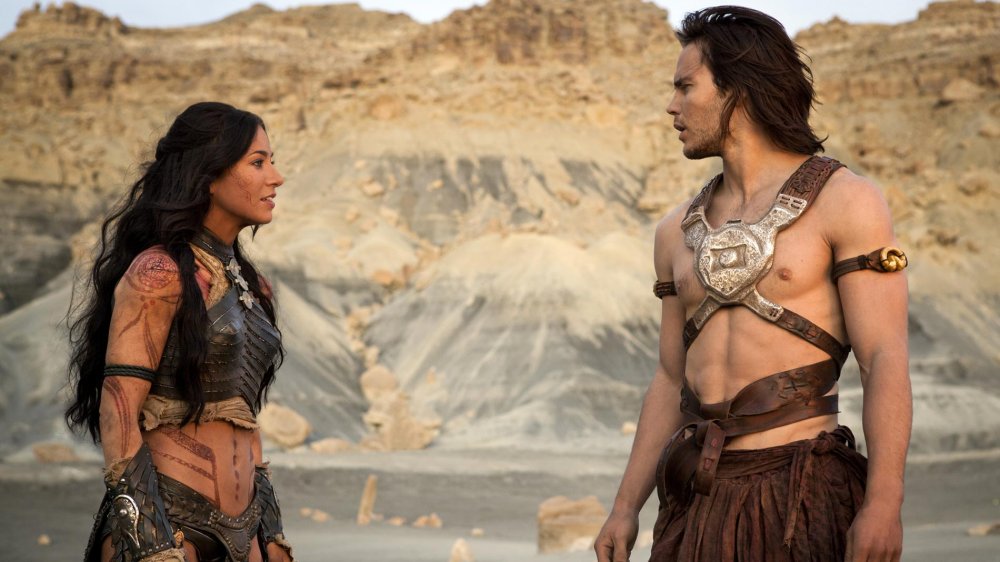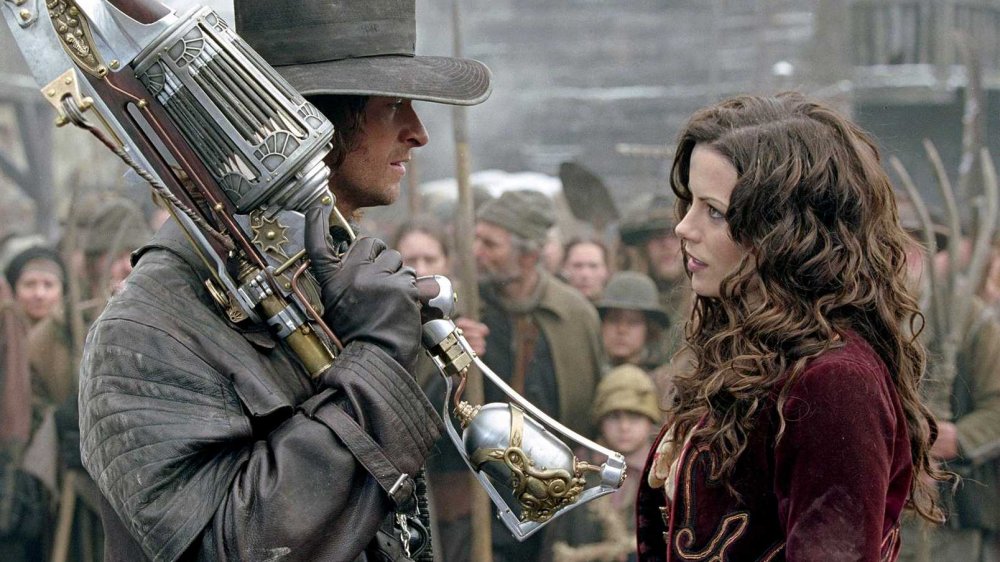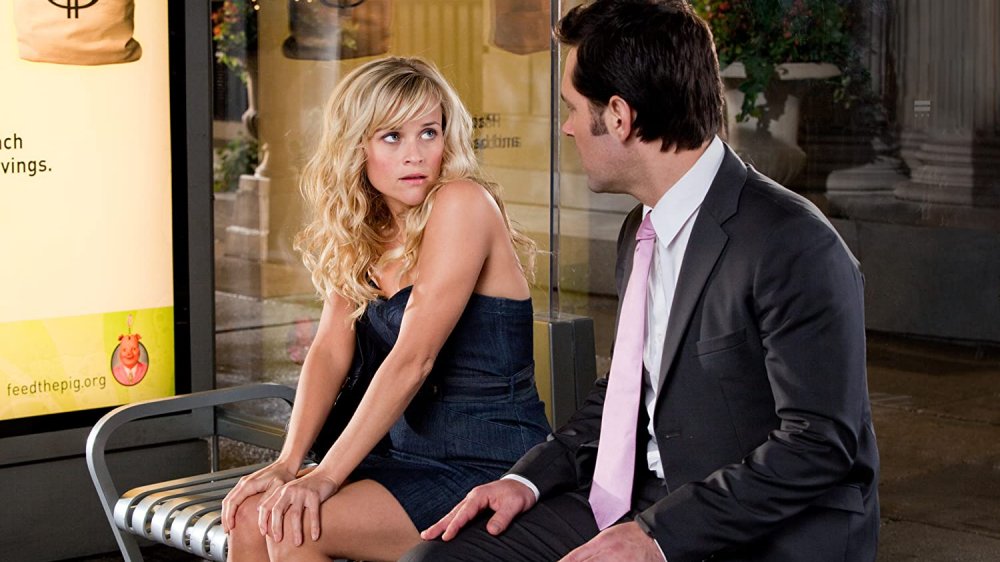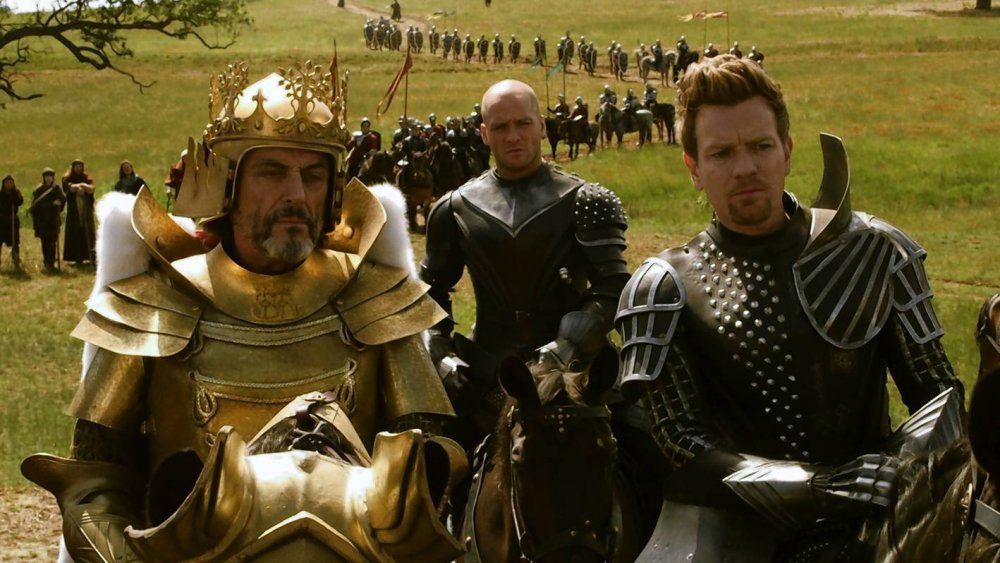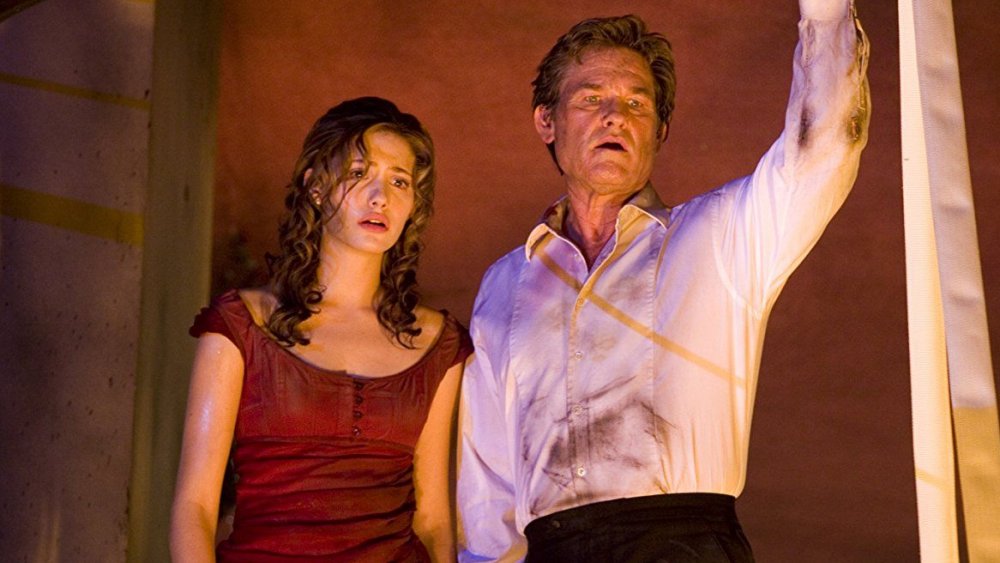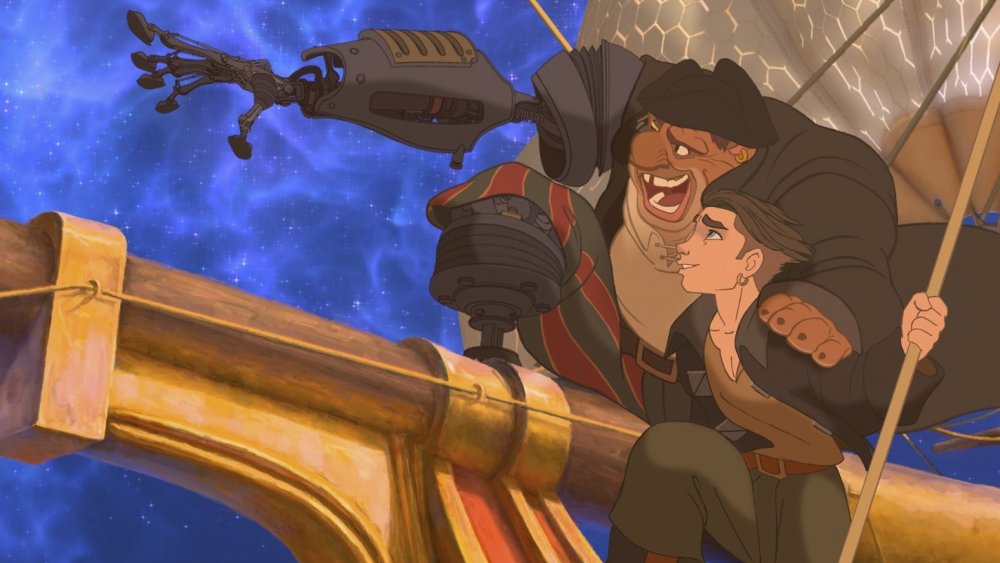The Most Expensive Movies You've Never Heard Of
Blockbuster movies often come with blockbuster budgets. Avengers: Endgame, that most massive of modern movies, cost $356 million to make. But who cares, when it raked in $2.7 billion worldwide? Movies boasting internationally famous actors, superstar directors, ironclad franchise history, and cutting-edge computer graphics operate on a different sort of scale. Their budgets are gargantuan, but their profits are potentially record-shattering. As the saying goes, it takes money to make money. In the age of billion-dollar profit margins, more than a few movie studios are willing to spend, spend, spend.
But movies — even the ones that seem to be the safest bets — are still a gamble. Market research, advertising, and star-studded casts, no matter how carefully assembled, never actually guarantee success. The worst-case scenario, in which enormous quantities of cash are pumped into a film that flops, is never impossible, even for the most secure studio. The saving grace of these stinkers is that they tend to fade quickly from the public's memory ... but in the age of the internet, nothing stays forgotten forever. These are the most expensive movies you've never heard of, dredged from the depths of cinematic disgrace.
Nobody remembers Around the World in 80 Days because it's so boring
Sometimes a movie brings turn-of-the-century glamour, science, and politics together ... and still manages to end up forgotten. Released in 2004, Around the World in 80 Days attempted to give Jules Verne's 1873 novel the Hollywood treatment. International stars like Jackie Chan and Arnold Schwarzenegger showed up, the budget grew to $110 million, and historical luminaries like Queen Victoria, Thomas Edison, and the Ten Tigers of Canton all made appearances. None of these grand gestures, however, managed to save Around the World in 80 Days from the obscurity in which it rests. If it's remembered for anything, it's for being an infamous flop with a worldwide gross of only $72 million.
It isn't a terrible movie, really. Reviews weren't great, but that hasn't stopped family fare from doing well before — it's not as though the critics loved Minions. Around the World in 80 Days' greatest sin is being boring. Its take on Jules Verne's source material is shallow. Its action sequences are rote. Even its who's who of 1890s celebrities — including an in-progress Statue of Liberty — fails to dazzle. This is a film for no one, despite how many eras, styles, and genres it attempts to pack into its runtime, and so no one remembers it less than two decades after its debut.
Alexander is the historical epic that you've never heard of
Released in 2004, Alexander should be the sort of sword-and-sandal epic everyone has seen by the time they enter adulthood, whether on cable or in a history teacher's classroom. It's directed by Oliver Stone, stars Colin Farrell, Angelina Jolie, and Anthony Hopkins, and, y'know, it's about one of the most famous historical figures to ever walk the earth. Around $155 million was spent bringing Alexander to life ... and yet it only grossed $167 million worldwide. How exactly did such a sure thing end up so forgotten?
Well, for one thing, it's not a very good movie. For all the talent it musters, Alexander is a muddled, pretentious mess, richly deserving of its dire critical reception. The film is torn between being a dry recitation of facts and an action-driven epic, seemingly convinced that being as talky as possible equals serious-minded drama. It doesn't. Thus Alexander was forgotten, remembered most for achieving an unpleasant feat — making the story of Alexander the Great, who created one of the largest empires of the ancient world before he died at 32, boring.
47 Ronin was cinematic seppuku
Released in 2013, 47 Ronin is based on a historical event so frequently fictionalized, adaptations of it have their genre term — chushingura, or "the treasury of the loyal retainers." Stories of this stripe tell the story of the 47 ronin who, in 1702, spent a year planning their revenge upon the court official who murdered their master. It's the sort of story that's hard to screw up. Yet 47 Ronin did, and it was swiftly wiped from the public's memory.
The film's dire fate was made clear immediately after release. Reviews were scathing, and Japanese audiences, courted assiduously by the film's marketers, were unmoved by Hollywood's take on an already well-adapted tale. In the end, 47 Ronin made $151 million on a $175 million budget. This isn't much of a surprise to anyone who's seen the film. It inserts magic, monsters, and an entirely fictional protagonist, played by action star Keanu Reeves, into a story that simply doesn't need fantasy elements. A band of masterless samurai methodically plotting their revenge is already cinematic, no sorceresses or magical forests required.
John Carter is an expensive Disney flop that time forgot
Edgar Rice Burroughs' Martian series of pulp novels are among the most influential works of 20th-century science fiction. Chronicling the story of John Carter — a Virginian who fought for the losing side in the Civil War, moved out West, and ended up on Mars — they are sweeping tales of adventure, romance, and intrigue. The Martian series' impact upon genre fiction can't be overstated. Carl Sagan, Ray Bradbury, and Arthur C. Clarke were all influenced by Burroughs' vision of "Barsoom," as the Martians refer to their home.
It makes sense, then, that Disney bet on their 2012 adaptation, John Carter, being a big success. The film ended up grossing $284 million worldwide, a respectable number to be sure, but it's still gone down in history as one of the biggest box-office bombs of all time. John Carter's exorbitant budget ended up being $250 million, with analysts pegging its combined production and marketing costs as $350 million. In the end, John Carter resulted in a $200 million write-down for Disney. All potential sequels were canned, and in 2014, Disney let the film rights to the Martian series revert back to the Edgar Rice Burroughs estate. Years later, John Carter is mostly remembered as a famous disaster ... when it's remembered at all.
Van Helsing was a horror hit you've never heard of
More than a century after its publication, we have yet to tire of Bram Stoker's Dracula. Enter 2004's Van Helsing, a film that pits Stoker's Dutch vampire hunter against the entire Universal monster menagerie. Wielding enchanted pistols, spinning crucifixes, and solar-powered bombs, Van Helsing takes down Frankenstein's monster, the Wolf Man, and Dracula. It's every horror-fantasy trope of the early 2000s incarnate. Our female lead wears an exterior corset, Van Helsing sports a billowing leather coat straight out of The Matrix, and every action scene has a slick, video game-y quality, in which gravity is reduced and the camera veers wildly between extreme close-up and massive wide shots.
It cost $160 million and ended up making $300 million, despite negative reviews. But for all its success, Van Helsing is remembered far less frequently than contemporaries like 1999's action romp The Mummy. An animated prequel and a one-shot comic book were produced, but no sequel ever arrived. Then 2012 brought announcements of a reboot as part of Universal's Dark Universe, but like everything having to do with that particular project, 2017's The Mummy's under-performance cast Van Helsing's future into doubt. It remains a strange success — watched by many but truly beloved of few.
Evan Almighty cost an ungodly amount of money
Bruce Almighty was an unlikely hit. For one thing, the 2003 comedy takes on religion, a cultural third rail if ever there was one. Bruce, played by Jim Carrey, is a TV reporter given the power of God by the big man himself. He learns to appreciate his life for what it is, to see humanity with newly compassionate eyes, and to be thankful for the gifts he's been given. Along the way, however, he humiliates his rivals, transforms prayers into emails in an infinite inbox, and goes full Moses-parting-the-Red-Sea on a bowl of tomato soup. Despite this irreverent approach to faith and so-so reviews, however, it made $484 million worldwide on an $81 million budget, making it the fifth highest-grossing film of 2003.
A sequel was, of course, ensured, and as a result, we got 2007's Evan Almighty, in which Steve Carell becomes a modern-day Noah. The budget ballooned, landing at a colossal $200 million with marketing costs, making it, at the time, the most expensive comedy movie ever made. Yet Evan Almighty only ended up grossing $174 million. What happened? For one thing, an incredibly expensive ark was built according to the dimensions of the biblical vessel. For another, many millions were spent marketing the film to religious audiences. Only an enormous profit could have turned Evan Almighty into a success ... and that necessary deluge of dollars failed to flood the theater.
How Do You Know spent way too much money on its stars
Take four blockbuster leads, put them in a romantic comedy set in the elite echelons of sports and finance, and debut it just before Christmas, when moviegoers are hungry for warmhearted, happy endings. How Do You Know banked on this formula, spending $120 million on its tale of a professional softball player at loose ends and the love triangle she finds herself enmeshed within. Yet the 2010 film brought in a worldwide gross of only $48 million. Reviews were no kinder. Critics savaged it as being navel-gazing, dull, and entirely too long.
How Do You Know's star power ended up being its Achilles' heel. The salaries of Reese Witherspoon, Paul Rudd, Owen Wilson, and Jack Nicholson, combined with director James L. Brooks', cost $50 million on their own. Then there was the fact of Brooks' long and meticulous production and post-production processes. Costs went up as the months ticked by — all the more so when Brooks decided to re-shoot the beginning and end of the film. This attention to detail has resulted in some of his greatest work, including Terms of Endearment and Broadcast News, but How Do You Know didn't end up being a repeat performance. If it's remembered at all, it's as a legendary catastrophe — one point of distinction no director covets.
Jack the Giant Slayer is an expensive fairy tale that's faded away
Fairy tales have yet to lose their grip on the public imagination. Jack the Giant Slayer aimed to capitalize upon that in 2013, with a big-budget fantasy adventure all about the Jack who scaled the beanstalk and slew the giants found at the top. There's a princess to be saved, a highly coveted crown, and plenty of magical beans. Around $195 million was spent bringing this vision to life, yet the worldwide gross ended up a mere $197 million. The fairy tale-inspired films that led to Jack the Giant Slayer's creation, like Snow White and the Huntsman and Alice in Wonderland, have massively outlasted Jack in the public imagination, despite so-so sequels for both.
Reviewers identified many reasons for this failure. For one thing, Jack is a shallow reinterpretation, more interested in glitzy effects than its own story. For another, it's oddly torn between seeking a family audience and a grown-up one. Jack is PG-13, stranded somewhere between being a bloody, Game of Thrones-style affair and a twinkly-eyed tale for tots. Director Bryan Singer reportedly had to tone down the violence, a choice that kept Jack from being R-rated but lingers in the final product, to its detriment. Today, Jack has disappeared behind the clouds, all traces of its beanstalk wiped from the cinematic landscape.
Poseidon was pricey ... and it sank at the box office
Paul Gallico's 1969 novel The Poseidon Adventure has been adapted into three films, the latest of which, 2006's Poseidon, is a remake of the earliest, 1972's The Poseidon Adventure. It's easy to see why the property has proved to be such a rich vein of content. It tells the story of a band of passengers who must survive within a capsized ocean liner until rescue arrives. The simple act of turning a luxurious ship on its head makes for inventive cinema. Stairs, suddenly must be scaled like cliff faces, windows look out into murky ocean depths, and lobbies must be crossed by makeshift zip line.
The 1972 Poseidon Adventure was a major hit, winning a Special Achievement Academy Award for Visual Effects and the Academy Award for Best Original Song. A remake seemed like a no-brainer, especially in the post-Titanic world. And 2006's Poseidon bet $160 million on that surefire success ... only to earn a middling $181 million worldwide. Reviews were similarly lackluster, and though the film was nominated for the Academy Award for Best Visual Effects its predecessor once won, it lost to Pirates of the Caribbean: Dead Man's Chest. In the end, Poseidon sunk, leaving few ripples behind in the public's memory.
The incredibly expensive Treasure Planet didn't earn back any gold
Legendary Disney directors Ron Clements and Jon Musker pitched Treasure Planet way back in 1989, alongside The Little Mermaid. It would take a decade for their sci-fi vision of Robert Louis Stevenson's legendary Treasure Island to be made ... but it would take only a few months to cement it as one of Disney's most infamous failures.
To this day, 2002's Treasure Planet is the most expensive traditionally animated film ever made. The $140 million spent making it certainly shows. Its vision of star-flung adventure is dazzling, earning solid reviews and a nomination for the Academy Award for Best Animated Feature. Yet it only brought in $110 million worldwide. Today, it's hard not to see Treasure Planet as a symbol of the end of the Disney Renaissance, that period in which the studio produced megahits like The Lion King and Aladdin. It's unfair, really. Treasure Planet is worth anyone's time, both as a fascinating sci-fi outlier among Disney's fantasy fare and as one of the best Disney movies most people haven't seen. But the box office is cruel, and so Treasure Planet was tossed into the abyss of animated oddities.
Despite its awesome plot, you've probably never heard of Windtalkers
Released in 2002, Windtalkers boasts a killer premise. It's the story of the Navajo code talkers, who used their native languages to keep US military secrets safe from Axis ears. Directed by the legendary John Woo, it's a story that intertwines Native American history, World War II, and espionage into one cinematic package. Yet it failed to join the ranks of beloved WWII movies like Saving Private Ryan and The Great Escape, nor did it land in the tier below, of war movies that aren't classics but still appreciated, a la The Patriot. It slid into obscurity, where it remains.
The writing was on the wall from the beginning. Windtalkers bombed at the box office. It made $77 million worldwide on a $115 million budget. Though reviews weren't nightmarishly bad, they weren't exactly ecstatic, either. Windtalkers is a flat movie, derivative of other, better war films even a newbie cinephile can identify. Moreover, despite its subject matter, Windtalkers stars Nicolas Cage stars as Joe Enders, the code talker's white sergeant. It's clear the film believes him to be a necessary entry point for reluctant audiences, but every passing year has only further revealed how foolish a choice this was. Enders takes up valuable time that could've been devoted to the insanely cinematic experiences of the Navajo soldiers themselves, whose code remains the only spoken military code never to have been cracked.
